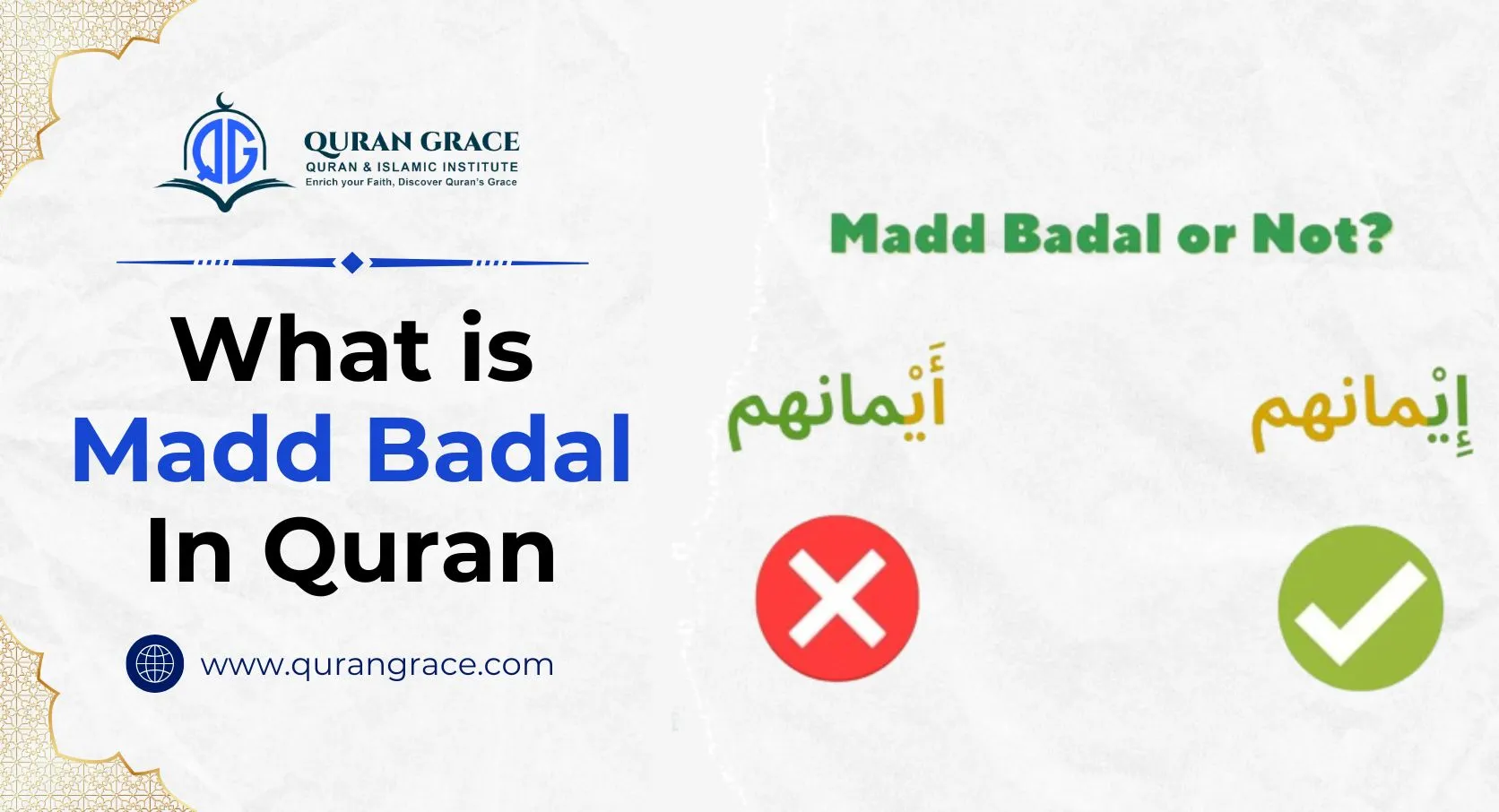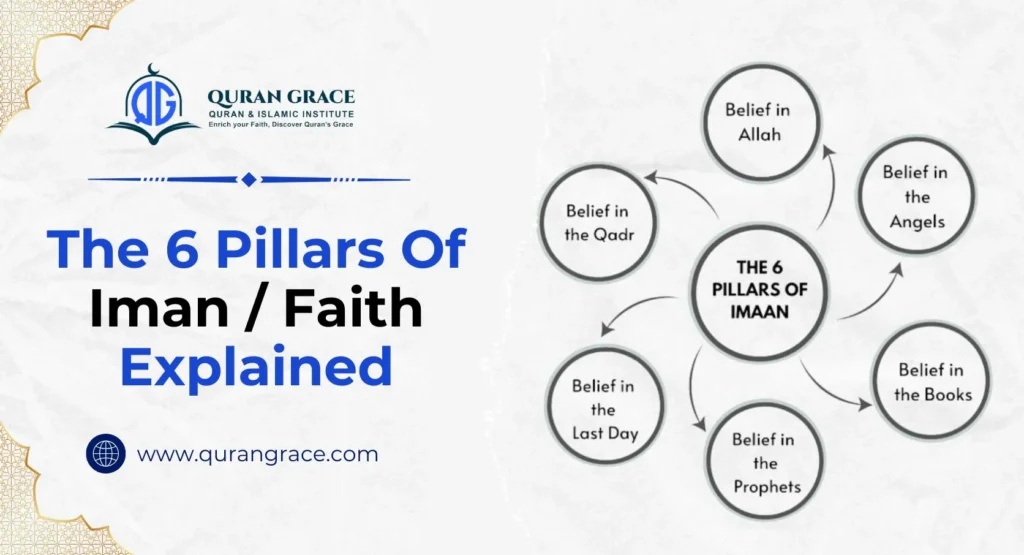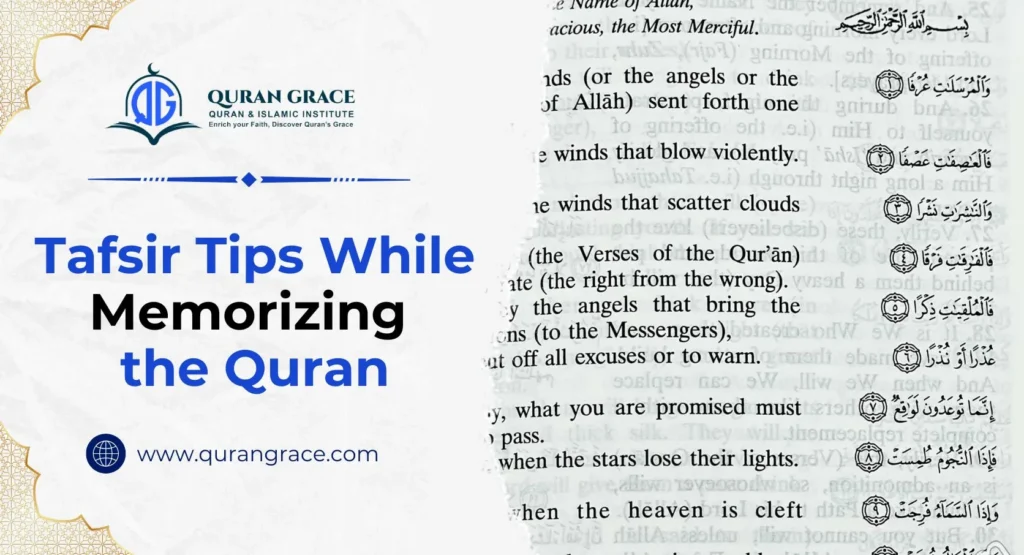Mastering Tajweed is essential for a precise recitation of the Quran. However, the learning process presents certain challenges. One such challenge is understanding the various Madd types, including Madd Badal. Despite these challenges, the dedication to mastering Tajweed is ultimately rewarding. In this article, we will delve into the specifics of Madd Badal, shedding light on its significance and application in Quranic recitation.
Table of Contents
ToggleWhat is Madd al Badal?
“Madd Al-Badal” in Arabic refers to a phonetic phenomenon that occurs when two hamzas appear in a single word. When the second hamza is followed by a sukoon (a marker denoting silence), the first hamza transforms to Madd Badal, which converts the second hamza into a long vowel sound represented by the letter Madd.
This rule stems from the natural challenge our mouths face when pronouncing consecutive hamzas, particularly when the second hamza is muted. The concept of Madd itself is derived from the original connection to the Hamza, which is a strong consonantal sound.
A prime example is the word “آمن” (to believe), which starts with a hamza. Initially composed of a fatha followed by a hamza and a sukoon, this word demonstrates the process perfectly: the second hamza has been transformed into an alif, mirroring the fatha of the first hamza. This intricate interplay between sounds illustrates the beauty and depth of Arabic phonetics and its rules.
Madd Al Badal Examples In Quran
Some Madd Al Badal examples from the Quran include:
- لِإِيلَافِ قُرَيْشٍ
- فكيف آسى على قوم كافرين
- قالوا أُوذينا من قبل أن تأتينا ومن بعد ما جئتنا
How to Apply Madd Al Badal:
In cases where a word contains two Hamzahs, the first Hamzah will have a vowel, while the second will have a Sukoon. This rule of madd al-badal dictates that the second Hamzah transforms according to the vowel associated with the first Hamzah. Specifically, the vowel will determine the corresponding Madd letter:
- If the first Hamzah carries a Dammah, the second Hamzah will be converted to و (Waw).
- If it has a Kasra, the second Hamzah will change to ي (Ya).
- If the first Hamzah is marked with a Fathah, the second Hamzah will turn into ا (Alif).
For example, in the word وَأُوتِينَا, the second Hamzah changes to a Madd form, resulting in WaOoteena. In another example, وَا۪يتَٓائِ is transformed to Eeetaae.
These changes improve readability and fluency when reciting the Book of God, facilitating a smoother reading experience.
When Not to Apply Madd Badal
To better understand the given example and rule, let’s look at an example where this rule does not apply. In the Quran, the word أَيْمَانَهُمْ does not have Madd Badal, and the pronunciation is Aymaanahum.
The use of the Madd Badal depends on the specific situation. First, the first letter must be Hamzah. Second, the second letter must be one of: Hamzah (ء), alif (ا), wow (و), or Ya (ي). Finally, the second letter must be a Sakin letter.
If this condition is met, Madd Badal is used, and the result is to extend the letter to two vowels (Harakah) before the vowel. Extending lengthens the sound of the letter, making it twice as long as it is usually pronounced.
It should be noted that the use of Madd Badal is special for reading the Qur’an and Tajweed. It adds beauty and rhythm to reading, making it melodious and enjoyable. However, it is not used in ordinary conversation or everyday conversation.
Why is Madd Badal Important in Tajweed?
Madd Badal holds great significance as it enriches the fluency and harmony of Quranic recitation, transforming it into a melodious and balanced auditory experience. By extending the sound of the Madd letter, the reciter expertly navigates the delicate interplay of the Hamzah and Madd, ensuring that the natural rhythm of the recitation flows seamlessly, like a beautiful melody unfolding. This graceful elongation not only enhances the beauty of the verses but also allows for a more accurate and resonant pronunciation, enveloping the listener in the enchanting embrace of the sacred text.
Conclusion
You will naturally apply the rules of Tajweed and form a habit of reading the Qur’an if you receive instruction from an experienced Qur’an teacher who is well-versed in Tajweed. Enroll in our exclusive online Quran classes at Quran Grace if you would like to learn more about advanced Tajweed rules. To get in touch with us and begin a free trial lesson, click here!
We provide online Tajweed course taught by native Arabic teachers who use engaging teaching strategies to make sure you master and advance your Quran reading skills.








